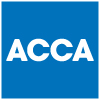Business Asset Disposal Relief, is available for those in business, which may reduce the tax rate on the first £1 million of qualifying lifetime gains to 10%.
This is targeted at working directors and employees who own at least 5% of the ordinary share capital of the company and the owners of unincorporated businesses.
BADR is available to individuals on the disposal after two complete qualifying years of:
- all or part of a trading business carried on alone or in partnership
- the assets of a trading business after cessation
- shares in the individual’s ‘personal’ trading company
- assets owned by the individual used by the individual’s personal trading company or trading partnership where the disposal is associated with a qualifying disposal of shares or partnership interest.
New 5% rules for company shareholders
To qualify for BADR, the company needs to be an individual’s personal company where the individual must:
- be a company employee or office holder
- hold at least 5% of the company’s ordinary share capital and
- be able to exercise at least 5% of the voting rights.
For disposals on or after 29 October 2018, they must also satisfy one of the following tests:
- a distribution test – an individual is entitled to at least 5% of the company’s profit available for distribution to equity holders and 5% of the assets available for distribution to equity holders in a winding up; or
- a proceeds test – an individual is entitled to at least 5% of the proceeds in the event of a disposal of the whole of the ordinary share capital of the company.
Thought should be given to the structure of your company at the outset to ensure that the tax benefits of Business Asset Disposal Relief are not lost.
Investors’ Relief (IR)
If you do not meet the criteria for Business Asset Disposal Relief (BADR) you may still be able to take advantage of the ow 10% rate of tax through IR.
IR is available to external investors (other than certain employees or officers of the company) in unlisted trading companies. To qualify for the 10% CGT rate under ‘investors’ relief’ the following conditions need to be met:
• shares must be newly issued and subscribed for by the individual for new consideration
• be in an unlisted trading company, or an unlisted holding company of a trading group
• have been issued by the company on or after 17 March 2016 and have been held for a period of three years from 6 April 2016
• have been held continuously for a period of three years before disposal.
An individual’s qualifying gains for IR are subject to a lifetime cap of £10 million.
Talk to us about your BADR planning
Loucas can help you to build a tax-efficient financial plan that ensures you are making the most of the reliefs and allowances available to you.
If you would like to discuss any of the issues raised in this guide please call 01622 758257 or contact us.




